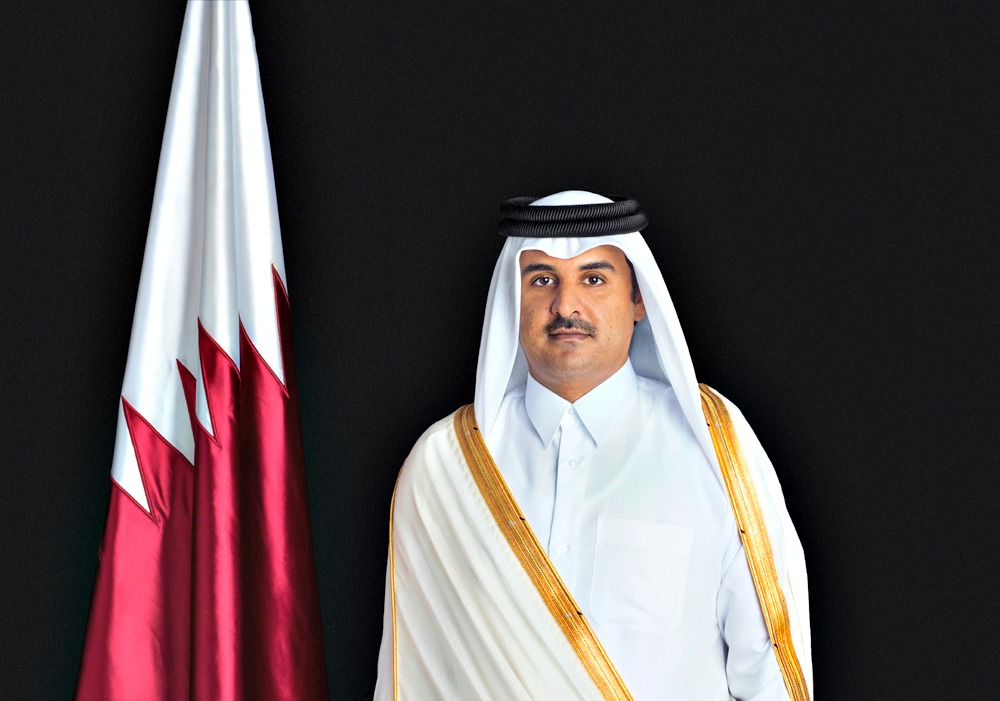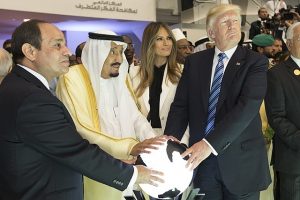by James M. Dorsey
The Gulf crisis that pits Saudi Arabia and the UAE against Qatar is set to escalate with Doha certain to ignore Monday’s deadline that it complies with demands that would undermine Qatari sovereignty and humiliate Emir Sheikh Tamim bin Hamad Al Thani at a time that he is riding high on a wave of Qatari nationalism sparked by the Gulf crisis.
Four weeks into the crisis, the demands appear to have been crafted for what is becoming a longer battle that the two Gulf states hope will end with Qatar, with or without Sheikh Tamim, adopting policies crafted in Riyadh and Abu Dhabi. Saudi Arabia and the UAE have declared the demands to be non-negotiable, offered Qatar no face-saving way out of the crisis, and appear to have designed them to be deliberately insulting.
The Saudi-UAE-led coalition against Qatar is likely to further tighten the boycott of Qatar once the Monday deadline passes. However, UAE State Minister for Foreign Affairs Anwar Gargash’s prediction of a parting of ways, which ultimately could include Qatar leaving the six- nation Gulf Cooperation Council (GCC) that groups the Gulf’s monarchies, would neither reduce tensions or end the crisis. Neither would an effort to suspend Qatar’s membership of the Arab League.
Saudi and UAE perceptions of Qatari policies as a threat to the survival of their regimes would not be allayed by a divorce that would allow Qatar to continue to chart its own course. It is those perceptions that drove the two countries to launch their zero-sum game. Moreover, a Qatar capable of defying its more powerful neighbours would put on public display limits to Saudi and UAE power.
The lesson of the past weeks is that Qatar can survive the boycott as long as countries like Turkey and Iran help it meet its food and water requirements, retains access to international shipping lanes, maintains its oil and gas exports; and has uninterrupted, normal dealings with the international financial system.
Saudi Arabia, the UAE and Qatar have so far exempted oil and gas from their fight. Qatar continues to pump natural gas to the UAE through a partially Emirati-owned pipeline. Dubai is dependent on Qatar for 40 percent of its gas.
Similarly, Saudi Arabia has been careful not to disrupt the tanker market and complicate Qatar’s energy exports by blocking shared vessel loadings. Such a move would create logistical challenges not only for Qatar but also for the kingdom’s own clients who would be forced to reorganize dozens of cargoes. It could also reduce the number of available vessels and drive up shipping costs.
Qatar hopes that its ability to defy the boycott will force Saudi Arabia and the UAE to tighten the boycott in ways that could backfire. Potentially, that could happen if Saudi Arabia and the UAE act on a threat to take a you-are-with-us-or-against-us approach towards their trading and commercial partners. That would put to the test, Saudi Arabia and the UAE’s ability to impose their will on others.
So far, it’s not been easy going for Saudi Arabia and the UAE. Qatar refuses to bend, most Muslim countries are unwilling to follow the Saudi-UAE lead, and many in the international community are irritated by the two countries’ approach that threatens to complicate the fight against the Islamic State, risks volatility in energy markets, and increases instability in what is already the world’s most unstable region.
Despite denials, Saudi Arabia and the UAE’s take-it-or-leave-it approach appears to include the option of fostering an environment conducive to regime change if Qatar proves capable of circumventing the boycott for an extended period of time.
State-controlled media in the kingdom and the Emirates contributed to efforts to undermine Sheikh Tamim’s position with for the Gulf almost unprecedented attacks on Qatar’s ruling Al Thani clan and interviews with little known dissident family members as well as former military officers opposed to the emir’s policies.
The Saudi and UAE strategy risks painting the two countries into a corner with Qatari support for Sheikh Tamim complicating suggestions voiced by a prominent Saudi journalist with close ties to the government and a Washington-based Saudi lobbyist that the brutal 2013 Egyptian coup that brought general-turned-president Abdel Fattah Al-Sisi to power could be repeated in Qatar in some form or fashion.
Saudi and UAE tactics as well as some of the demands that include halting support for militants and Islamists, closing a Turkish military base in the Gulf state, reducing relations with Iran, and shuttering Qatar-sponsored media, including the controversial Al Jazeera television network, could however prove to be a double-edged sword.
In a move that likely contributed to turning Qatari public opinion against them, Saudi Arabia and the UAE, citing unsubstantiated allegations that the Gulf state supported Houthi rebels, expelled their nemesis from the Saudi-led military coalition fighting the insurgents in Yemen a day after six Qatari soldiers were wounded defending the kingdom’s southern flank.
The two Gulf states implicitly included Houthi rebels in Yemen in their demand that Qatar break off its relations with militants and Islamists. While there is little doubt that Qatar at times went too far in nurturing those relationships, it is equally clear that some of them enjoyed tacit Western and Saudi backing.
In the case of the Houthis, Qatar likely maintained clandestine contacts while joining the Saudi-led fight against them given Qatar’s repeated efforts over a period of more than a decade to mediate between the rebels, the Saudi-backed Yemeni government and the kingdom. Qatar negotiated since 2004 various ceasefires in intermittent wars between the government and the Houthis only to see them thwarted with the support of Saudi Arabia.
Former US diplomats in cables to the State Department while serving in Yemen and more recently in interviews suggested that Saudi Arabia’s obsession with the Houthis predates the rebels closer relationship with Iran since the invasion began in 2015. If anything, Saudi obsession drove them further into the hands of the Iranians.
Moreover, closer analysis of the Saudi and UAE demands creates the impression that certainly in the case of the kingdom the pot at times is blaming the kettle. Abd al-Wahhab Muhammad Abd al-Rahman Al-Humayqani, the only Yemeni on the Saudi-UAE list of alleged terrorists associated with the two Gulf states’ demands, is a US Treasury designated terrorist linked to Al Qaeda who, reportedly lives at least part-time in the Saudi capital.
The Treasury designation in 2013 did not prevent the Saudis from including Mr. Al-Humayqani in the delegation of the Saudi-backed government to failed peace talks in 2015 or from serving as an advisor to Yemeni President Abd Rabbuh Mansur Hadi, who is resident in the kingdom.
All of this makes hopes for a negotiated solution of the Gulf crisis all but an illusion. Maintaining the status quo is not an option for Saudi Arabia and the UAE. Escalation of the crisis is risky not only for the Gulf states themselves but also for the international community. Yet, pulling the protagonists back from the brink without loss of face is a non-starter as long as both sides of the divide target absolute victory at whatever cost.
Photo: Qatar’s Emir Tamim bin Hamad Al Thani
James M. Dorsey is a senior fellow at the S. Rajaratnam School of International Studies, co-director of the University of Würzburg’s Institute for Fan Culture, and the author of The Turbulent World of Middle East Soccer blog, a book with the same title, Comparative Political Transitions between Southeast Asia and the Middle East and North Africa, co-authored with Dr. Teresita Cruz-Del Rosario and three forthcoming books, Shifting Sands, Essays on Sports and Politics in the Middle East and North Africa as well as Creating Frankenstein: The Saudi Export of Ultra-conservatism and China and the Middle East: Venturing into the Maelstrom. Reprinted with permission from The Turbulent World of Middle East Soccer blog.





